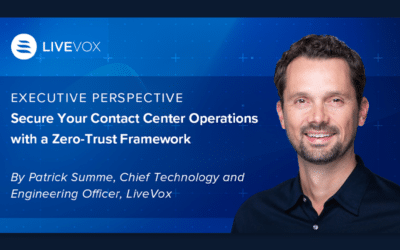How Do CFOS Budget the Way to Success?
Like the CEO, CFOs have a 30,000-foot view of the business. They control all of the data flows that impact the health of a business. A good CFO uses their high vantage point to take their company to new heights, leading a high-quality finance operation that manages critical responsibilities for the company. How do they do it? In this article we’re going to explore how to budget like a CFO.
Table of contents
- How Do CFOS Budget the Way to Success?
- Overview
- How do you make time for the kind of strategic thinking necessary to budgeting and forecasting for a new fiscal year?
- What is the key to a successful annual budget?
- What are the top budgeting mistakes CFO’s make and how can they be avoided?
- How does the customer care figure into the overall organizational budget? How can finance departments better incorporate the customer experience into their planning?
- Does the customer experience at an individual level figure into annual budgeting?
- Do you set the CX budget and then wait to see how the organization responds? Or do you prefer to let departments present solutions that make the most sense individually and then budget accordingly?
- What activities are the most time consuming for a budgeting and forecasting team? How can those be streamlined?
- From a budgeting perspective, how can communication be improved across all departments to optimize CX?
- How does budgeting and financial forecasting/long-range differ? Which is more important?
- How can CFOs utilize technology to drive innovation in customer care?
- How can CFOs push their companies to be more agile in an ever-evolving digital landscape?
- How can simplifying the budgeting and forecasting process aid in the transfer of knowledge across organizations to ultimately improve the customer experience?
- FAQs
Trying to draft an annual budget without the proper data collection processes in place is like trying to drive a car without a steering wheel. Overwhelmed by the task of gathering and analyzing the right KPIs, long term planning efforts suffer and this reflects in budgeting and forecasting.
Overview

According to LiveVox Head of Finance and Accounting Lambert Calvert, there are 4 distinct planning processes:
- Forecasting – Long Range Strategy
- Annual budgeting – YoY Goals
- Quarterly checks and balances – Short Term
- Day-to-day tracking – Fiscal pulse
Think of the processes like a ladder. Each rung reaches up to a high-level question, which is “ Are you collecting the right data?” Data collection is paramount to an annual budget. But not just gathering and measuring it. It’s most critical to align everyone in the organization around the right data points and then turn those into actionable outcomes that will drive long term success.
When preparing an annual budget or long term forecast, CFOs evaluate where the business is adding value in the market. They also provide ways to quantify that value against what competitors provide. This is a crucial step that determines where the chips will fall in every phase of planning thereafter.
In phase 1, CFOs determine high-level goals and set expectations for the future. Once the objective big picture is established, it’s time to let the data steer in the right direction. In this interview with Calvert, we learn how CFOs inform important strategic and operational decisions that have rippling effects for the entire company. Calvert offers up insights for how to improve business performance through data-driven initiatives, encourage innovation, and become a more agile planner.
The following are excerpts from our conversation:
How do you make time for the kind of strategic thinking necessary to budgeting and forecasting for a new fiscal year?
First, you need to layout your objectives and key results. This means figuring out who’s going to do what by when in order to realize the long term vision and value creation.
I think about the planning and forecasting process as having four parts:
- A long-range strategy
- A 1-year budget
- A quarterly forecast
- And a month to month
In the long-range plan, you estimate the financial potential of the company strategy by posing key questions. These questions should comprise a limited number of very important drivers and your metrics should absolutely measure these drivers. Ask yourself:
- Are your proposed value propositions better than your competition will be and what’s that worth in your market?
- What high-level investments does it take to realize the value creation your company envisions?
Here you must be honest with yourself. That’s where data comes into play. Finance wears a number of hats, one of which is serving as the source of truth for what’s good and what isn’t. If you feel something is good or bad how do you really know? If you benchmark your performance against a competitor the facts are obvious and there can be no organizational conflict because everyone can see it in the data.
Phases 2 through 4 are all about course corrections. They allow you to track what’s happening that is different than you expected initially. Changes in customer behavior, external events, competitive changes are just examples of many things that can affect your business positively or negatively. Finding these “events” quickly by analyzing your data allows you to react faster and more effectively.
What is the key to a successful annual budget?
It’s like leaving huddle in a football game, if everyone knows what to do, why they need to do it, and what the expected results are, you’ll achieve success.
What are the top budgeting mistakes CFO’s make and how can they be avoided?
Minimize emotional decision making and let facts and data be the primary decision tool. Decision making is optimized and buy-in is achieved when collaborators partner to define, gather and benchmark data.
How does the customer care figure into the overall organizational budget? How can finance departments better incorporate the customer experience into their planning?
CX strategy can vary between businesses. For some, it’s a matter of knowing that you want to communicate effectively with your customers. For others, it’s knowing that they want to communicate with you.
If you want a high-value customer experience you must measure alternative CX trials and determine which works best. At LiveVox it’s part of “tuning” the data. Can you run trial experiments, measure success, and make meaningful changes to your business? Can you do it cost-effectively at scale?
Does the customer experience at an individual level figure into annual budgeting?
As the Head of Finance, if I have to make a meaningful investment, I want to know the expected return and will hold the team responsible to deliver the results. If you are improving your TCO, I’m happy.
Do you set the CX budget and then wait to see how the organization responds? Or do you prefer to let departments present solutions that make the most sense individually and then budget accordingly?
I set long-range targets that define success for the total organization, then look for specific actions to make the targets happen and adjust as needed.
As an organization, we’re always evaluating our process. Any time somebody from the operational team can bring data to the table that’s important. Unfortunately many times finance sits outside of the operational or departmental decision making so the departments work in silos. It’s very important that finance also understands the direction of departments so they’re not hindered. The only way to get buy-in on a long term strategy is to ensure strategic alignment internally. You need to be able to listen, let people present their facts, and devise a roadmap from there.
What activities are the most time consuming for a budgeting and forecasting team? How can those be streamlined?
To drive alignment, ask the questions. Several times if need be. Having a clear communication strategy means goals are understood by everyone, which is critical. Clarifying organizational structure is a result of the four-phase strategic planning process. It makes estimating people, process, and system requirements straightforward. Phases 3 and 4 help you to know where you’re going and where you want to be. It goes back to the football huddle analogy – this is where tactical plays are agreed upon.
From a budgeting perspective, how can communication be improved across all departments to optimize CX?
Set aside the time to get everyone in one place and have a forum to discuss the metrics. This makes it easy to harvest intelligence across the business. Every month you’ll pick up something new because of the diverse perspectives your colleagues offer. Even when your plan is strongly rooted in data someone may see something you don’t and you can make adjustments accordingly because you’ve built in the flexibility in phases 3 and 4.
How does budgeting and financial forecasting/long-range differ? Which is more important?
Both are vital to the overall health of a business. Forecasting becomes a living document that changes in accordance with many variables from the market you’re into the customers you serve. From a strategic point of view, the long-range is more important. But you need to sync that long range strategy with investments in the short and long term. What it comes down to is not necessarily an either or because there is a symbiotic relationship between both.
How can CFOs utilize technology to drive innovation in customer care?
First, you need to ensure you have the right people and processes in place to make these kinds of evaluations. When looking to enhance the quality of your customer experience ask yourself “Do you have enough headcount in departments like business consulting or customer support?” Once you have the right people in place, then you can devise your strategy and allocate resources accordingly.
How can CFOs push their companies to be more agile in an ever-evolving digital landscape?
By collectively embracing a data-driven mindset. At LiveVox we use a DDI cycle. This stands for Data Driven Innovation. Basically, we establish a process, build a model that measures the process, execute, iterate, and repeat. The four phase planning process encapsulates DDI.
How can simplifying the budgeting and forecasting process aid in the transfer of knowledge across organizations to ultimately improve the customer experience?
Consistent and clear communication is your North Star for internal knowledge sharing. People often talk past each other. Things can get political. Spend time to slow down and ask questions. Establish clear definitions, have discussions about what the data means and how best to interpret it. It goes back to the forum idea and making sure that data is well circulated and everyone is on the same page.
FAQs
Embracing CFO budget planning can truly transform the way a contact center leader steers their ship. Picture this: you, the captain of your contact center voyage, armed not just with strategies but with the financial prowess of a seasoned CFO. The impact? Profound, my friend.
Imagine sailing through the unpredictable seas of business challenges with the unwavering confidence that comes with knowing your fiscal course is set in harmony with your strategic goals. That’s the power of CFO budget planning—it’s not just about numbers; it’s about aligning every decision with your vision.
As a contact center leader, CFO budget planning equips you with a compass to navigate resource allocation. It’s like having a treasure map that directs you to the most valuable aspects of your operation. The insights derived from meticulous budget planning allow you to make well-informed choices, optimizing every dime and minute invested.
But it doesn’t stop there. CFO budget planning isn’t a mere financial exercise; it’s an art of anticipating needs. Just as a wise sailor prepares for changing tides, you, with your newfound budget prowess, can forecast trends and allocate resources preemptively. No more battling stormy cost overruns or stranded agent shortages.
Now, picture this: you, the beacon of inspiration for your team. By embracing CFO budget planning, you lead with a strategy that resonates, demonstrating fiscal responsibility while fostering innovation. Your decisions aren’t just top-down mandates; they’re an embodiment of calculated, forward-looking choices.
In a world where contact centers are the hubs of customer interaction, CFO budget planning can catapult your center from good to exceptional. So, set your sails, dear leader, and embrace CFO budget planning—a toolkit of financial wisdom that empowers you to steer your contact center ship toward unprecedented success.







